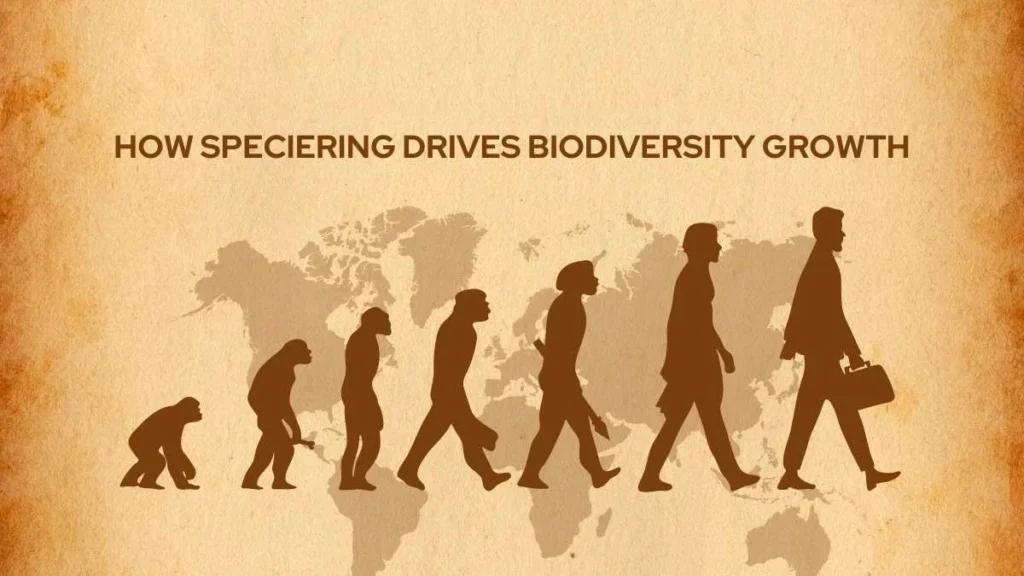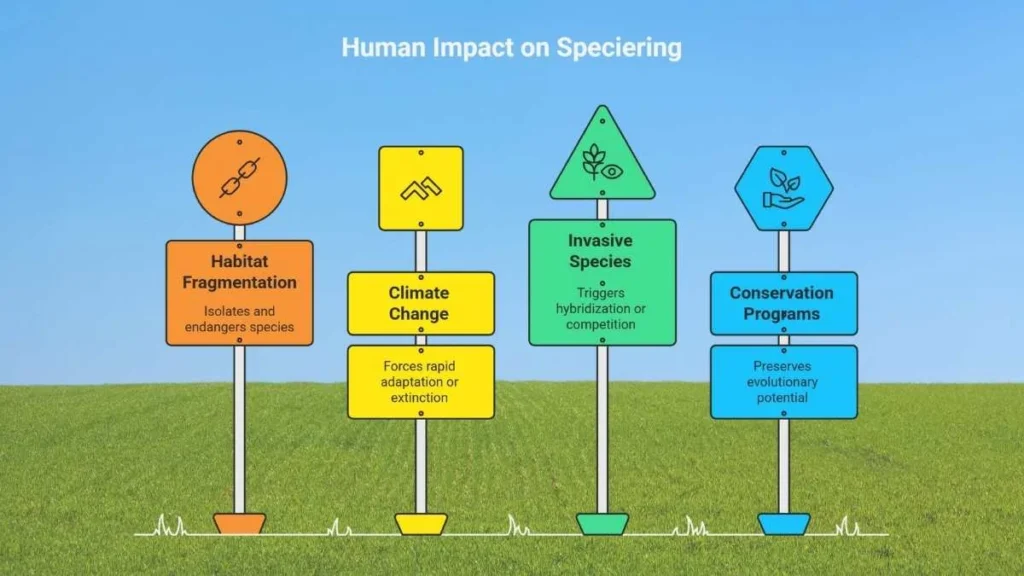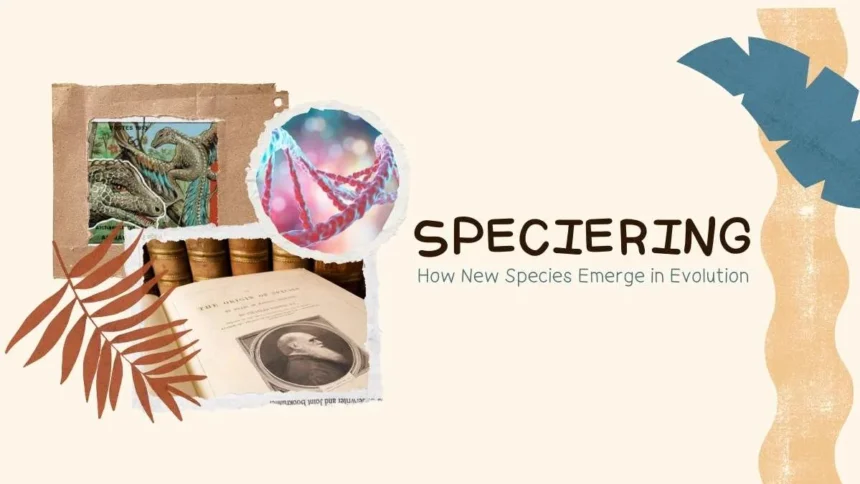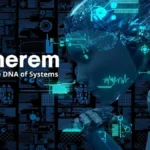Speciering, more commonly known as speciation, is one of the most fundamental processes in evolutionary biology. It describes how new species arise from a shared common ancestor, shaping the diversity of life we see today. From the finches on the Galápagos Islands that inspired Charles Darwin’s groundbreaking theories, to the dazzling variety of cichlid fish in Africa’s Great Lakes, speciering provides the mechanisms that drive biodiversity across ecosystems.
Understanding it is essential not only for evolutionary science but also for appreciating how life adapts, survives, and thrives in changing environments. This article offers a comprehensive exploration of speciering, its mechanisms, examples, importance, and role in the ongoing story of life.
What Is Speciering?
Speciering, often called speciation, is nature’s way of creating new species. When populations of the same species stop interbreeding due to reproductive barriers, they gradually diverge into independent species. These barriers can be physical, ecological, or behavioral.
Some related terms that explain this process include evolutionary divergence, biodiversity formation, and adaptive radiation. Together, they highlight how speciering fuels life’s diversity and ensures survival under changing environmental conditions.

Speciering Types and Their Examples
| Type of Speciering | Key Factor | Example |
| Allopatric | Geographic isolation | Darwin’s finches |
| Sympatric | Ecological/behavioral barriers | Apple maggot flies |
| Parapatric | Neighboring but different habitats | Metal-tolerant grass |
| Peripatric | Small group isolation | Hawaiian fruit flies |
Drivers of Speciering
Several forces interact to create new species:
- Geographic Isolation: Physical barriers such as mountains, oceans, or glaciers prevent gene flow.
- Ecological Pressures: Different habitats, food sources, or climates push populations to adapt uniquely.
- Genetic Changes: Mutations, chromosomal rearrangements, and genetic drift contribute to divergence.
- Behavioral Differences: Variations in mating calls, courtship rituals, or seasonal breeding times reduce interbreeding.
These factors combine in countless ways, shaping evolutionary pathways across the natural world.
Famous Examples of Speciering
Darwin’s Finches
Perhaps the most iconic example, Darwin’s finches, illustrate how environmental factors drive speciation. On the Galápagos Islands, finch populations adapted to different food sources. Some developed long, slender beaks for insects, while others evolved short, strong beaks for cracking seeds. These adaptations eventually created distinct species.
African Cichlid Fish
In Africa’s Great Lakes, particularly Lake Victoria and Lake Malawi, hundreds of cichlid species have evolved in relatively short evolutionary time. Each species specializes in different ecological niches, from algae scraping to snail crushing, showcasing explosive adaptive radiation through speciation.
Polar Bears and Brown Bears
Polar bears (Ursus maritimus) diverged from brown bears (Ursus arctos) as they adapted to Arctic environments. Differences in diet, physiology, and habitat created reproductive isolation, leading to a distinct species.
Orchids
Plant speciation is also remarkable. Orchids, one of the largest plant families, often specialize in pollination by specific insects. Subtle differences in flower structure and pollinator preference drive the formation of countless orchid species.
Why Speciering Matters
It is the engine of biodiversity. It helps ecosystems remain healthy and resilient.
- Adaptation to change: New species can better handle climate shifts, diseases, or competition.
- Ecosystem stability: Each species fills a niche, balancing natural systems.
- Conservation value: Recognizing distinct species helps in targeted protection efforts.
- Innovation in traits: Evolution produces unique abilities such as camouflage, flight, or resistance to toxins.
Human Impact on Speciering
Humans play a powerful role in shaping the future of species formation:
- Habitat fragmentation from cities and deforestation can both isolate and endanger species.
- Climate change forces populations to adapt quickly or risk extinction.
- Invasive species sometimes trigger hybridization or competition.
- Conservation programs such as captive breeding preserve evolutionary potential.
Our actions can either disrupt or encourage the natural process of speciation, making awareness crucial.

Speciering and Evolutionary Science
It is central to evolutionary biology because it bridges microevolution (small genetic changes within populations) and macroevolution (large-scale evolutionary patterns over time). While natural selection explains how populations adapt, speciation explains how new branches form on the tree of life.
This dual perspective allows scientists to understand both the details of adaptation and the grand patterns of biodiversity across geological timescales.
Why Speciering Matters Today
It is not just a concept of the distant past; it continues today, shaping the living world around us. From insects adapting to pesticides to plants evolving new pollination strategies, new species are constantly emerging.
For humanity, appreciating speciering deepens our understanding of life’s resilience and adaptability. It reminds us that biodiversity is not static but ever-changing, and our role in protecting it has never been more critical.
FAQs
Q1: Can speciering happen quickly?
Yes, in cases like cichlid fish or plants, new species may form in just thousands of years.
Q2: Are humans still undergoing speciering?
Some scientists believe cultural and genetic changes could drive subtle divergence in the future.
Q3: Does hybridization always prevent speciering?
No, in some cases, hybrids may become stable, leading to entirely new species.
Conclusion
Speciering, the evolutionary process that transforms populations into distinct species, is the heartbeat of biodiversity. Through geographic isolation, ecological specialization, genetic change, and behavioral divergence, life continuously branches and multiplies. Iconic examples like Darwin’s finches and African cichlids reveal speciation’s power to generate dazzling diversity, while modern research uncovers its mechanisms at genetic and ecological levels.
In a rapidly changing world, speciation remains vital. It ensures adaptation, sustains ecosystems, and offers humanity profound lessons about resilience and interconnection. To understand speciation is to grasp one of the most creative forces in nature, the force that gave rise to every species, including our own.






